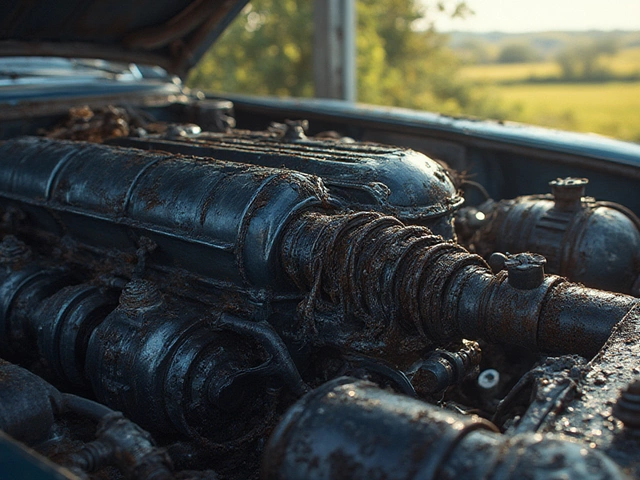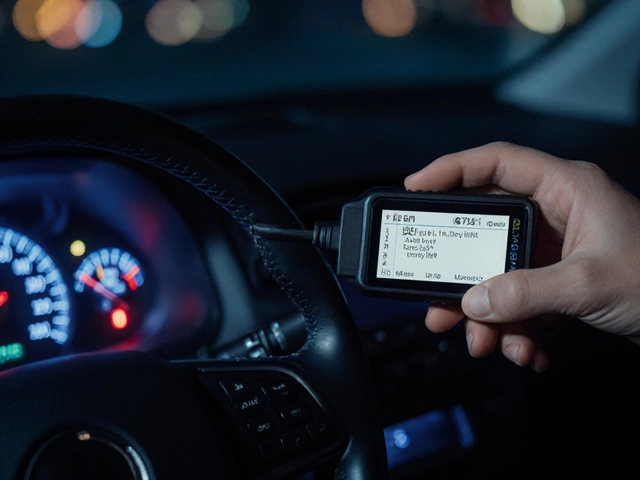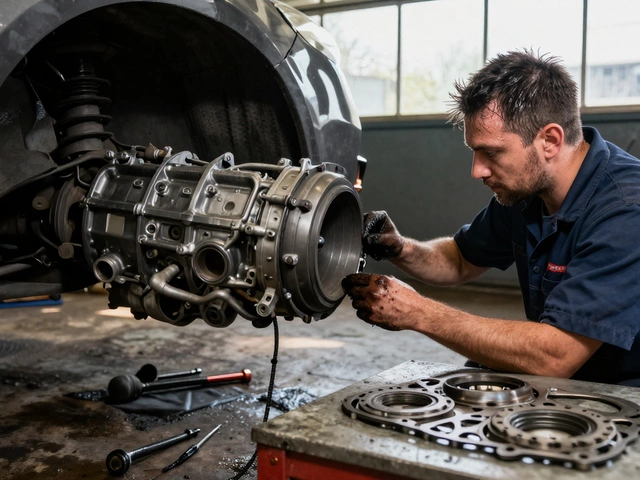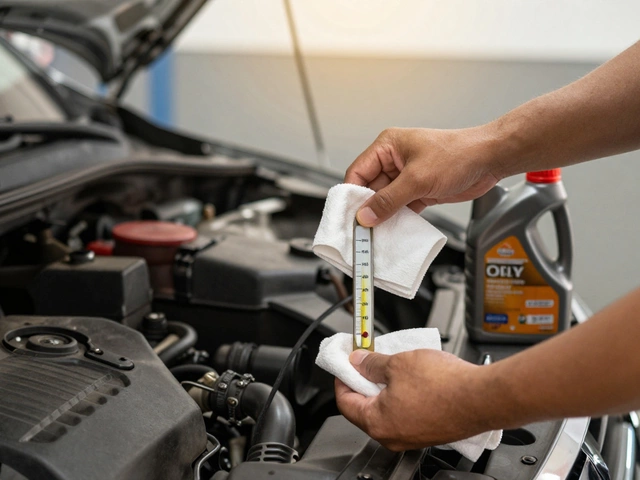Brake pads are vital components of your vehicle's braking system, and knowing when to replace them is key to ensuring a safe drive. They undergo significant wear and tear each time you hit the brakes, which means keeping an eye on their condition can save you from costly repairs or dangerous situations. But how do you know when it's time to swap them out for new ones? Let's explore some practical insights to keep your braking system in top shape.
- Signs You Need New Brake Pads
- Factors Influencing Brake Pad Lifespan
- How to Inspect Your Brake Pads
- Tips for Extending Brake Pad Life
Signs You Need New Brake Pads
Every driver needs to be aware of the telltale signs indicating it's time to replace their brake pads. Listening closely to your car can often give you the first clues. If you hear a high-pitched screeching noise when your car comes to a stop, it might be time for new pads. This noise often stems from the wear indicator, a small metal tab designed to make noise when your pads are too thin. Staying alert to these auditory warnings can save both your brakes and your wallet from further damage.
Another sign of weary brake pads comes from the feel of the brake pedal itself. If you notice that you need to press down farther than usual to achieve stopping power, your brake pads might be worn out. In some cases, the pedal might even feel mushy, a condition indicating that it's time for an inspection. Driving with reduced braking power can be risky, especially in sudden stop scenarios, so it's always better to err on the side of caution and replace pads when noticed.
While some signals can be heard or felt, others can only be seen. Inspecting your wheels, you might notice an unusual amount of brake dust accumulation. An increase in this powdery residue is another hint that it's time for new brake pads. You can also physically inspect the thickness of your pads. If they're thinner than a quarter of an inch, it's definitely time for a replacement. These measurements are critical to maintaining your vehicle's safety standards.
"Ignoring the signs of brake wear can lead to costly repairs and dangerous driving conditions. Regular checks and replacements are key to vehicle longevity," says Automotive Expert, John Grainger.
Besides these common symptoms, there's another crucial indicator: vibrations. If your steering wheel begins to shake when you apply the brakes, it's necessary to inspect the entire brake system, including pads. Such vibrations could mean uneven wear or warped brake components. In such situations, an immediate professional assessment is advisable to ensure your safety.
Indicators of worn brake pads can vary depending on your vehicle's features. Many modern cars come equipped with dashboard warning lights that illuminate when it's time for a brake inspection. It's important to take these warnings seriously, as they can help prevent more extensive problems down the road. Regularly checking both the manual and your car's warning systems will keep you ahead in your vehicle maintenance.
When it comes to ensuring your safety and that of other road users, replacing brake pads at the right time is indispensable. By staying vigilant and recognizing the signs, ranging from noise to physical wear, you can assure your car's brakes are always in peak condition. If in doubt, consulting with a professional mechanic is always a wise choice, reaffirming not only the lifespan of your vehicle but, most importantly, the safety of your journeys.
Factors Influencing Brake Pad Lifespan
The lifespan of brake pads is an intriguing dance between different elements. It's important to remember that not all brakes wear down at the same pace; various factors can accelerate or slow this process. Chief among these is your driving style. If you're prone to sudden stops or a lot of city driving where frequent stopping is necessary, you'll probably find yourself replacing brake pads more often. Each abrupt stop increases friction, which creates heat and gradually wears down the pad's surface. In contrast, steady highway driving with gentle braking tends to prolong brake pad life.
Beyond driving habits, the conditions in which you're driving play a crucial role. Urban environments with stop-and-go traffic are harsher on brake pads compared to rural or suburban roads. Similarly, hilly terrains that require constant braking to navigate will also contribute to faster wear. Importantly, weather conditions such as cold climates with icy roads can lead to increased braking, which means the replacement of your brake pads becomes a frequent exercise.
Another factor to consider is the type of brake pad material. There are three main types — organic, semi-metallic, and ceramic. Each type has its pros and cons. Organic pads are softer and quiet but wear out quickly. Semi-metallic pads, often found in performance vehicles, are durable and perform well under high temperatures but can be quite noisy. Ceramic pads offer a good balance of performance, longevity, and noise levels but usually come with a higher price tag. Choosing the right brake pad can enhance or diminish their life expectancy.
"Brake pads can last anywhere from 25,000 to 70,000 miles depending on the factors affecting their use," notes John Bishop, an expert mechanic, who stresses the importance of regular check-ups.
It's also crucial to factor in the weight your vehicle carries. A fully loaded car will require greater stopping power, thus putting more stress on the brake system. If you're often driving around with heavy loads, you might notice that your brake pads wear down faster.
Finally, routine maintenance can't be overlooked. Regular inspections by a professional ensure that your braking system, including brake pads, calipers, and rotors, are functioning properly. A professional eye can spot uneven wear or damage that could hint at bigger issues down the road. This proactive approach can save both time and money, reducing risks while driving and minimizing unexpected brake pad replacements. It's a good rule of thumb to check the pads during tire rotations or oil changes, keeping an eye on both thickness and wear pattern. Paying attention to these aspects can add miles to your pads and peace of mind to your driving experience.
| Factor | Impact |
|---|---|
| Driving Style | Frequent hard stops lead to faster wear. |
| Environment | City and hilly terrains decrease pad life. |
| Pad Material | Ceramic lasts longer than organic pads. |
| Vehicle Load | Heavier loads increase wear rate. |
| Maintenance | Regular checks can prevent premature wear. |
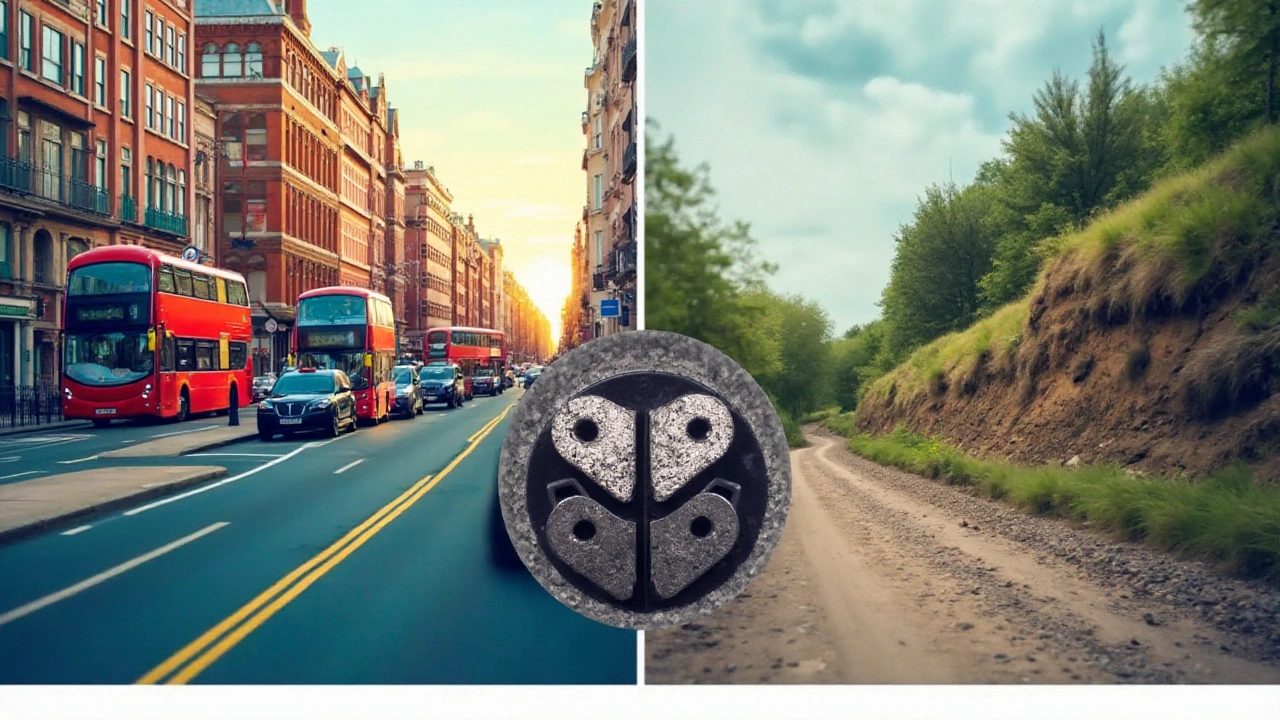
How to Inspect Your Brake Pads
Understanding how to inspect your brake pads can save you from unexpected failures and ensure your vehicle remains safe on the road. The process might sound technical, but with some patience and attention to detail, you can easily determine whether your brake pads require changing. Firstly, it’s essential to park your vehicle on a level ground. Use a car jack to lift your vehicle, making sure it is secure and stable before you begin. Once the wheel is off, you'll notice the brake caliper, a housing which holds the brake pads. With a flashlight in hand, peer through the caliper to observe the brake pads closely.
A telltale sign of worn-out brake pads is their thickness. Commonly, brake pads should be at least a quarter inch thick. If they appear thinner than this, it's about time to consider getting new ones. Look carefully for any noticeable grooves or uneven wear on the surface – these can indicate potential issues such as misalignment or warped rotors. An unevenly worn pad could also point to problems with the brake caliper not sliding properly, which is another cause for brake pad replacement. Inspecting brake pads not only involves checking their thickness but also listening for unusual sounds while driving. Squealing or screeching noises might imply hard spots or wear indicators doing their job.
According to the National Highway Traffic Safety Administration, "Ensuring your car's braking system is in good condition is non-negotiable for road safety. Routine inspections and timely replacements can significantly reduce the risk of brake failure."
It's not just about noise and thickness, though; the material your brake pads are made from plays a crucial role. While brake pads composed of organic materials offer excellent stopping power, they tend to wear faster compared to metallic ones which are more durable but might produce more noise. Ceramic pads are somewhere in between, offering a balance of longevity and performance. Knowing what's on your car can offer insights into how regularly they need checking and replacing. If you drive in heavy traffic or traverse hilly terrains often, these factors can accelerate wear and dictate more frequent inspections.
To aid in your inspection, consider keeping a brake pad gauge handy. This simple tool provides an accurate reading of pad thickness, making it easier than eyeballing the wear. After assessing the physical state of the brake pads, don’t overlook the brakes' performance. If you notice your vehicle pulling to one side or pulsating as you brake, despite the pads appearing fine, it might be wise to consult a professional. Regular self-inspections can boost your confidence and knowledge, allowing you to catch issues early before they escalate into major problems, ensuring both your vehicle's longevity and your safety.
Tips for Extending Brake Pad Life
Brake pads are an integral part of your vehicle, and keeping them in good condition is essential for both safety and cost-effectiveness. Replacing brake pads too often can be a hassle, not to mention expensive, but with a few mindful habits, you can extend their life significantly. One of the simplest ways to do so is to adopt a smoother driving style. Aggressive driving, with frequent sudden starts and stops, wears down brake pads much faster. Instead, trying to anticipate traffic flow and slowing down gradually can make a huge difference. This involves looking further ahead on the road and responding earlier to changing situations, which not only saves the brakes but also makes for a more comfortable ride for everyone in the vehicle.
Regular maintenance checks are another crucial step in prolonging the life of your brake pads. Many drivers overlook this, assuming everything is fine until a problem arises. However, routine inspections can reveal potential issues before they become serious, such as uneven tire wear or misalignment, that can adversely affect brake pad wear. During these checks, ensure that your brake fluid is also topped up. The hydraulic nature of your braking system means that without the right amount of clean brake fluid, your brakes, including the pads, won't function as efficiently as they should. Each of these maintenance practices is straightforward yet highly effective in keeping your brake pads in great shape.
Another practical tip is to lighten your load. Carrying excess weight in your vehicle puts additional strain on the brake system. The heavier the vehicle, the more force is required to stop, which in turn wears down the brake pads more quickly. It's a good habit to periodically remove unnecessary items from your car, especially if you're accustomed to using the trunk for long-term storage. You'll find not only will your brakes last longer, but your fuel efficiency will improve too. According to the U.S. Department of Energy, every additional 100 pounds of weight can drop your MPG by up to 2%. Just another good reason to travel light!
In case you're skeptical about how much of a difference these tips can make, consider this insight from car maintenance expert Mike Allen:
"Taking good care of your brake system can nearly double the lifespan of your brake pads, cut down on repairs, and keep you safely on the road." Implementing these practices doesn't take much effort yet offers great benefits in the long run. Not only does it ensure your car stops safely when you need it to, but it also keeps more money in your pocket.
Finally, investing in high-quality brake pads can have a significant impact on their lifespan. While it might be tempting to go for the cheaper options, the process behind manufacturing better pads involves more durable materials and stringent testing, making them a wiser choice in the long run. Check for products that are well-reviewed by both automobile experts and everyday users to get the best value. Remember, a little investment now can lead to greater savings later and give you the security of having your vehicle in optimal condition.

